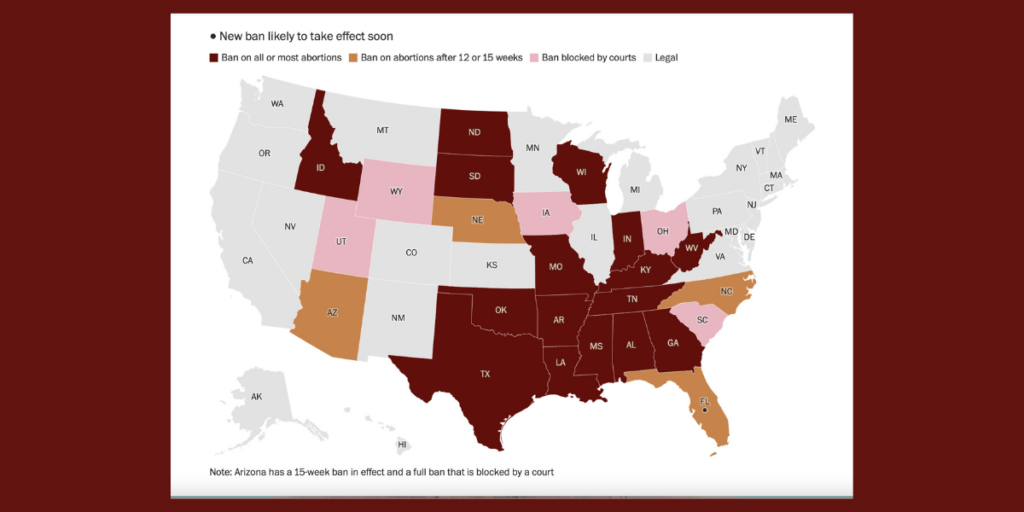
The Cautionary Tale of New Mexico
Why Ohioans Must Vote for Issue 1 – A Long Term View of What Could Be
Absent any kind of political or emotional spin, Issue 1 is about strengthening Ohio’s constitution, by making it more difficult to amend, largely by raising the threshold to 60% of voters approving state constitutional amendments instead of just the current 50% + 1. Add the spin back in, and the average Ohioan can be forgiven for being confused.
Opponents claim passage of Issue 1 will “end majority rule” and result in 40% of the voting population making decisions for the entire state. In fact, the passage of Issue 1 would actually require more Ohioans to weigh in before constitutional amendments could be made by requiring that petitions for proposing such amendments would include signatures from voters in all 88 counties statewide (currently, state constitutional amendments can be proposed with signatures of voters from just 44 Ohio counties).
Constitutional procedures aside, much of the buzz surrounding Issue 1 has also focused on an upcoming election in November regarding a proposed Ohio constitutional amendment that will determine crucial quality-of-life matters involving every hot button reproductive issue today.
Per CNN on July 25, passage of the constitutional amendment in Ohio’s November election would simply “ensure every individual has a right to make and carry out one’s reproductive decisions.” A closer look reveals more concerning detail.
Per Ohio Right to Life, “the initiative’s language uses the legal term ‘individual,’ which does not differentiate between adults and minors, [ultimately] nullifying parents’ rights to stop their children form making harmful [and irreversible] medical decisions;” the amendment would also “allow for abortion without limits,” “enshrine protections for anything involving ‘reproductive decisions’ (including gender transition ‘therapy’ – ie: hormones and irreversible surgeries) and “legally protect” any adult – teacher, abuser or otherwise – assisting a minor “in getting an abortion or sex change.”
In other words, if Issue 1 fails in August and the state’s traditionally lower voter threshold remains unchanged, “reproductive rights” groups feel they have a better chance of getting unlimited abortion, minors’ access to sex change surgery and nullified parental consent written into Ohio’s constitution in November; all it would take to make those things law would be a “yes” vote by 50% of Ohio voters + 1. Conversely, Issue 1 proponents believe increasing the threshold for constitutional amendments to “yes” votes by 60% of the population would make it much more difficult for “reproductive rights” groups to enact such extreme legislation in a solidly Republican state.

Ohio voters can read both the language of Issue One itself and the state’s approved arguments both for and against the issue on Ohio Secretary of State Frank LaRose’s official website. Voters should also note that, per this July 27th Cleveland.com article, Issue One opponents have raised nearly three times as much money as proponents, 84% of which has come not from Ohioans, but from dark money groups out of state (Issue 1’s official proponents have also raised money from outside the state, just significantly less, and none of it came from dark money).
As Ohioans grapple with the very real potential that the Buckeye state could become a place of virtually unlimited access for minors and adults alike to transgender surgeries and abortion, Cincinnati Right to Life is presenting a fact-based case for voting “yes” on Issue One (and later voting against the November “reproductive rights” ballot issue) by showing what a state with just one of the amendment’s proposed items – unlimited access to abortion – looks like right now.
***
“New Mexico has always been the back-alley abortion center for the US,” says private malpractice lawyer and pro-life advocate Mike Seibel. That, he says, is largely due to the efforts of a Baptist minister-slash- M.D. named Curtis Boyd – “the single largest abortionist in the U.S.,” notes Seibel, “who’s done 250,000 abortions – 1% of Roe – all by himself.”
But since the reversal of Roe v. Wade last year, the back alley has moved mainstream and abortions in the state have more than doubled.
By the numbers, the state’s 19 abortion clinics, completed 4900 abortions in 2021. The number jumped to 11,000 in 2022 (per a KVIA/ ABC-7 report July 6th) and the state is on track to match it again in 2023. Perhaps most interesting of all, only approximately 2500 of New Mexico abortions each year are performed on in-state residents, notes Seibel; the remaining 75-80% are performed on out-of-staters.
Whether from Texans & Oklahomans fleeing new, post-Roe abortion restrictions or just an uptick in “abortion tourism,” the recent increase prompted the state’s governor, Michelle Lujan Grisham, to jump into action. Per CNN, in September 2022, she “signed an executive order directing that $10 million from her executive capital allocation for the 2023 legislative session be purposed for a new clinic in Doña Ana County, which borders Texas’ westernmost point.”
And in July 2023, Governor Lujan used taxpayer funds to set up a new hotline “for women seeking abortion,” reported KVIA / ABC 7. One month after going live, the state-funded hotline was leading women not only to over thirty in- and out-of-state abortion providers, but just weeks ago, a watchdog group called New Mexico Alliance for Life discovered the hotline was also referring women to a group called TST Health, or The Satanic Temple Health, self-described as “the world’s first religious abortion clinic.”
On the Satanic Temple Health’s website, women are encouraged to perform an act called “The Satanic Abortion Ritual – a destruction ritual that serves as a protective rite,” “includes the abortion itself” and urges women to speak the following words (among many others): “By my body, my blood. By my will, it is done.” It also urges women to read the Satanic Temple’s Third & Fifth tenets aloud.
Even without the involvement of Satanists, New Mexico serves as a strong cautionary tale. Not only is the state essentially “lawless” when it comes to abortion – “the only statute we have on the books right now is the partial birth abortion ban,” says Seibel (who helped achieve that legislative goal) – but “the University of New Mexico (UNM) has become one of foremost abortion training centers in the U.S.” Perhaps more disturbing, though, is the fact that “UNM was making a ton of money off of abortion,” says Seibel. “Especially the sale of body parts.”
In 2016, UNM – the state’s flagship university – was threatened with a criminal investigation after it was discovered the school had been using aborted fetal tissue, including brains, as dissection material during summer camps. In 2017, a Select Investigative Panel of the U.S. Energy and Commerce Committee uncovered that more than a dozen U.S. universities, including UNM, had cultivated gruesome symbiotic relationships between abortion clinics and the schools, where aborted fetuses for research were essentially exchanged for abortion services from university doctors, residents and fellows.
At UNM, many of those abortion doctors were trained at a chapter of The Ryan Residency Training Program in Abortion and Family Planning. A 2021 study on the program published in the journal Contraception noted “Over 20 years, the Ryan Program has supported programs to integrate abortion training to give ob-gyn residents the skills and inspiration to provide comprehensive reproductive health care, including uterine evacuation and abortion care, in future practice.”
Those who believe what’s happening in New Mexico couldn’t happen here may not be aware of the prominent Ohio locations where the Ryan Residency Training Program is also in use, including The Cleveland Clinic, Case Western Reserve / University Hospitals and the University of Cincinnati College of Medicine. The latter two, plus The Ohio State University (whose current Vice Chair of Gynecology, Lisa Keder, allegedly developed that University’s own Ryan Residency program), all partner with a “reproductive health and policy context” political group called the Ohio Policy Evaluation Network (OPEN) that is currently focused on four research projects, three of which are abortion-centric. In an Orwellian twist, the vast majority of people working on the OPEN project and advocating for increased access to abortion, are women.
As New Mexico continues its abortion-driven trajectory, Seibel can’t help but feel fearful for the state of Ohio. If Issue 1 fails and the November election codifies abortion into Ohio’s constitution, Seibel especially fears for the safety of the women who will likely come flooding into the state seeking the procedure. “Abortion is inherently dangerous in my opinion,” he notes, “and if you don’t have something to regulate it, you have an unsafe abortion industry that will pop up in Ohio like we have in New Mexico. We see so many injured people here. You would see a decrease in safety and responsibility of the abortion industry.”
In other words, he adds, “You can join us in New Mexico as being the back alley of the nation. You can quote me on that.”
Contributed by guest columnist: Lisa Murtha
